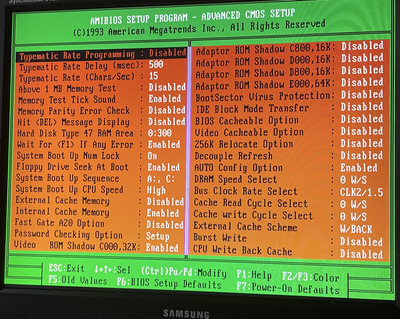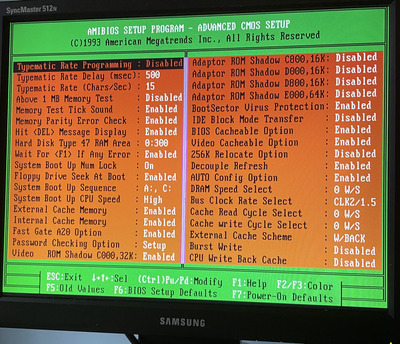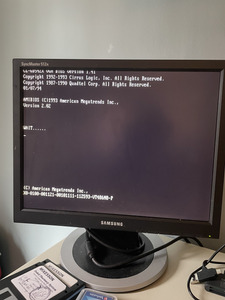First post, by Ndc2012
Hi Everyone!
Long time reader, first time poster - I'm hoping y'all can help (sorry for the lengthy post in advanced)!
I have an old 486 clone machine that my family got for Christmas in 1994. I just found it in a closet and have been working to rehab it. I didn't start building machines until the Athlon era, so my knowledge on the 486's is a bit more limited, but I truly cherish the tech.
Here are the specs of the machine:
486-GVT (Rev A2) Motherboard (Not the more popular 486-GVT2 board, I'm basing my findings on the TAG placement for the external cache configurations)
AMD 486 DX2-66
16MB FPM RAM (4 x 4MB 30 pin with parity chips 4x9 @60ns)
256KB External Cache (8 x AS7C256-20PC chips + 1 for TAG) Alliance Chips
LSI Chicago 235 watt PSU
The board has an AMIBIOS chip reading 486DX ISA BIOS AB5649161
Expansion Cards:
Soundblaster 16 CT2770 ISA sound card
Cirrus Logic CLVGA542XVL/H VLB Card with 1MB onboard
QD6580 HDD + Floppy VLB Controller card
UMC PC1414UX 14.4 ISA Fax Modem Card
Updates:
I've replaced the mechanical HDD with a Compact Flash storage device (Any drives above 500MB require a Disk Overlay, unfortunately the system doesn't support LBA natively)
I've ordered a 64MB FPM Ram kit from ebay, but it hasn't arrived yet
I removed the double speed CD rom drive (which still worked), and replaced it with a 24x drive from the early 2000s
When I found it, the CMOS battery was dead as a doornail, and thus the BIOS had lost all configurations. I've since removed the soldered battery, and replaced it with an external one, but I am having a HECK of a time with the bios configuration.
When I use the "Power On Defaults" the computer functions, albeit at a glacial pace. Power on defaults disable both the internal and external cache memory. I've tried using "BIOS Defaults" setting, which does enable both internal and external cache, but the system is highly unstable, and cannot complete any windows installations. I found that I can use the "Power On Defaults" and enable the internal cache, and the computer will continue to function, but as soon as I start enabling the external cache is where I start running into system crashes and instability. So I'm sure it has to do with the way the cache is (not) being configured in the BIOS. I will attach photos of the Advanced Configurations for "Power On Defaults" and "BIOS Defaults" screens, plus the POST screen for the BIOS version details.
Can anyone help me out with the configurations here to enable both the internal and external cache so the machine doesn't hang or crash? I've done hours of research online, but I'm still not sure that I understand the math for the wait states with all the different bus speeds and the CPU clock multiplier, or whether I should be using write-back or write-through schemes.
Any and all help would be GREATLY appreciated. Thank you for all that you all do, I honestly wouldn't have been able to make it this far without this forum!! Please also let me know if you need any further details, I tried to provide everything I felt would be necessary for diagnosis, but can also do my best to provide whatever else you might need!


